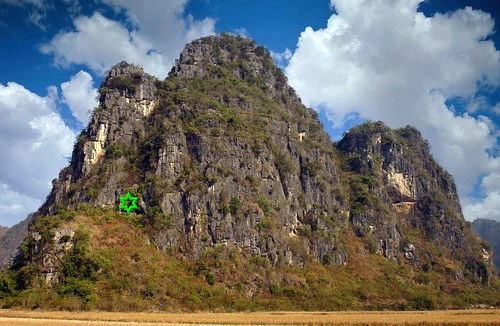110,000-year-old Chinese Fossil Poses Challenge to 'Out of Africa' Theory
Dating back to 110,000 years ago, a human fossil found in China could provide evidence disputing the theory that all modern day humans originally came from Africa.
Last week, China’s Institute of Vertebrate Paleontology and Paleoanthropologyannounced the discovery. Comprising of a human jawbone fragment, the fossil was found a year ago in southern China’s Guangxi pronvince.
Jin Changzhu, a researcher with the institute, said the find was especially important since very few human fossils from this evolutionary period have been found in China. He added that the jawbone is that of an early modern human, but it also bears the traits of our more primitive ancestors.
“The chin protrudes out like a Homo sapiens would, but the jaw also slopes in way like that of a Homo erectus,” he said.
Not Out of Africa Theory
Wu Xinzhi, a professor with the institute, said he believes the discovery presents evidence to challenge the “Out of Africa” hypothesis.This theory, which is more commonly held among scientists, argues that modern day humans directly descended from ancestors on the African continent. They then started to migrate across the globe around 60,000 years ago and replaced the more primitive humans.
“If this is true, then in China, we should not be able to find a mandible (jaw) of a fossil with modern features older than 60,000 years,” Wu said. “But this Guangxi mandible is 110,000 years old. This means that this ‘Out of Africa’ theory is not true, at least not for China.”
Instead, Wu said the fossil find lends support to another theory called the multiregional hypothesis. Under this scenario, humanity’s ancestors from Africa spread themselves across other continents by interbreeding with other primitive humans and evolving regionally. The blend of modern human and Homo erectuscharacteristics of the fossil found in China provides evidence for this Wu said.
But some other scientists from across the world are more skeptical about the discovery and its conclusions.
Opponents to the Theory
Chris Stringer, a professor at the Natural History Museum in London, is a leading proponent of the Out of Africa theory. He welcomed the find, but said the fossil was unfortunately too incomplete to accurately determine whether it was truly a Homo sapiens. He added that from what had been discovered, the fossil could also belong to that of a Neanderthal or other primitive human.
“If more complete material of this age is eventually found to match the (Homo) sapiens anatomical pattern this would at minimum suggest a more complex Out of Africa scenario,” Stringer said.
Tim White, a professor at the University of California, Berkeley who also studies human evolution, said he was doubtful of the claims being made about the fossil find. He added that the scientific paper published about the fossil find has so far been inadequate in convincing him.
"The evidence is extremely limited at this time, and the claims are extraordinary," White said. "Extraordinary claims deserve extraordinary evidence."
Wu said he has read the different rebuttals to the recent find, and does not expect his conclusions to convince everyone.
In the meantime China’s Institute of Vertebrate Paleontology and Paleoanthropology is hoping to find more discoveries in Guangxi's Mulan Mountain, where the fossil was originally found. The excavated jawbone is currently in Beijing, where more study is being done on it.
“We welcome all scholars to come and see the fossil,” Wu said. “And we’d like to get their input on it.”


No comments:
Post a Comment